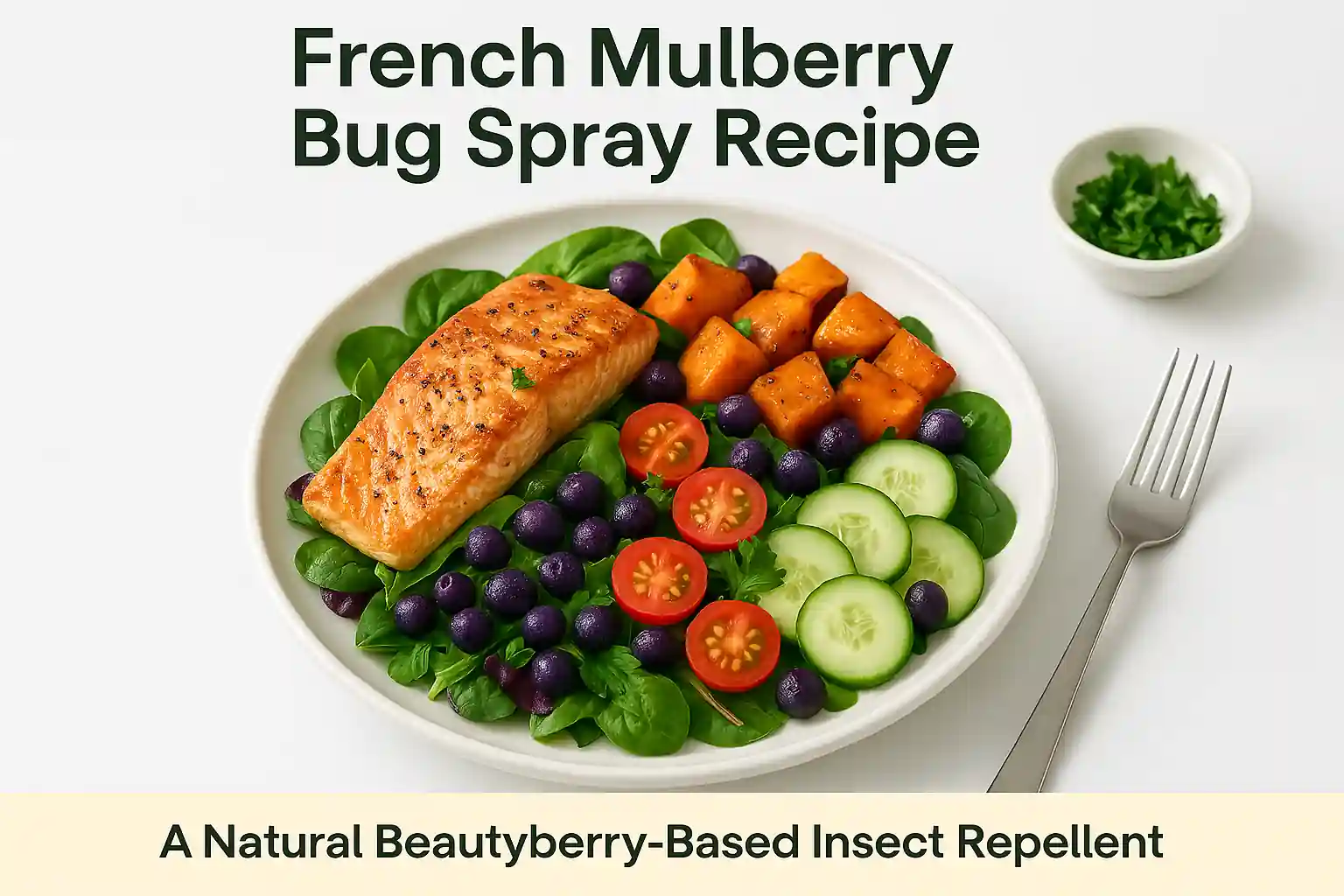French Mulberry Bug Spray Recipe: Harnessing the Power of American Beautyberry
The French mulberry, commonly known as the American beautyberry, is not just a visually stunning shrub with vibrant purple berries. It’s a traditional Southern favorite that’s gaining attention as a natural bug repellent. Whether you’re a forager, gardener, or someone looking to create chemical-free home solutions, understanding the beautyberry’s capabilities can enhance your outdoor experience.
In this comprehensive guide, we’ll explore the beautyberry bush, its insect-repelling properties, its edible aspects (such as beautyberry jelly), and how to make a highly effective natural bug spray that may be as effective as DEET—all supported by science, traditional knowledge, and sustainable practices.
American Beautyberry: The Plant Behind the Power
Callicarpa americana, commonly referred to as American beautyberry, is a native plant found throughout the southeastern United States. Despite its alternative name French mulberry, the plant is neither French nor a true mulberry. Its name likely originates from its similar fruit appearance and culinary uses.
Botanical Profile
-
Scientific Name: Callicarpa americana
-
Common Names: Beautyberry, French Mulberry, American Beauty
-
Habitat: Grows in woodlands and semi-shaded areas with moderate moisture
-
Appearance: Deciduous shrub producing clusters of small, vivid purple berries in late summer and fall
More about the plant’s taxonomy and growth behavior can be read on the Lady Bird Johnson Wildflower Center.
Natural Bug Repellent Properties of the Beautyberry Plant
Among herbalists and natural remedy seekers, the American beautyberry has been celebrated as a natural bug repellent for generations. What was once a folk remedy is now supported by scientific research.
What Insects Does It Repel?
-
Mosquitoes
-
Ticks
-
Ants
-
Fire Ants
-
Other general pests
Active Compounds Identified
In 2006, USDA researchers identified callicarpenal, intermedeol, and spathulenol in beautyberry leaves. These volatile compounds were shown to repel mosquitoes and ticks with surprising efficiency.
For detailed compound research, visit ScienceDirect’s breakdown on natural repellents.
Effective as DEET? Comparing the Results
Study Outcomes
According to studies by the USDA, callicarpenal has demonstrated repellent activity nearly as effective as DEET, especially in field conditions.
While DEET remains the gold standard in chemical repellents, many prefer natural alternatives like beautyberry leaves due to concerns over skin absorption and environmental impact.
Explore more on the National Institutes of Health’s PubMed Central for comparative results.
Making a French Mulberry Bug Spray at Home
Creating your own beautyberry insect repellent is not only satisfying but also allows for personalization. Below, we’ll cover several approaches including infusions, oil-based preparations, and alcohol extracts.
Ingredients and Supplies
-
Fresh beautyberry leaves (never dried)
-
Carrier oil (olive, jojoba, or coconut)
-
Distilled water
-
Witch hazel or vodka (for alcohol-based recipes)
-
A spray bottle
-
Clean mason jar with lid
Recipe 1 – Oil Infusion Method
This is a great way to extract and preserve the volatile oils from the leaves.
Instructions:
-
Harvest fresh leaves and rub gently to release oils.
-
Fill a clean mason jar with chopped beautyberry leaves.
-
Add oil of your choice to cover completely.
-
Seal and let infuse in a warm spot for 2–3 weeks.
-
Shake up the jar daily.
-
Strain and pour the infused oil into a spray bottle.
Add essential oils like citronella or peppermint for added potency.
Recipe 2 – Cold Infusion with Beautyberry Leaves
This method is faster and ideal for short-term use.
-
Fill a bowl or open bag with torn fresh leaves.
-
Add distilled water and let sit in a cool place for 24 hours.
-
Strain and pour into a spray bottle.
-
Use within 5–7 days and store in the fridge.
Note: According to Mississippi State University Extension, fresh leaves are important to maintain active compound levels.
Understanding the French Mulberry’s Range and Adaptability
Native Regions
The American beautyberry’s native growing area includes:
-
Texas
-
Louisiana
-
Florida
-
Georgia
-
Alabama
-
North and South Carolina
Interestingly, Japanese beautyberry (Callicarpa japonica) has reportedly naturalized in several U.S. zones and exhibits similar repellent qualities.
Learn more from North Carolina State Extension Gardening Portal.
Foraging Tips and Herbalist Insights
Identifying Beautyberries in the Wild
Beautyberries are easy to identify:
-
Clusters of bright pink or magenta berries
-
Leaves that are oval and lightly toothed
-
Berries cluster around the stem at leaf axils
When you rub your fingers through a cluster, a subtle herby scent confirms freshness.
Foraging and Herbalist Skills
The beautyberry plant is a perfect specimen for honing foraging and herbalist skills to experiment safely and naturally.
For safety guidelines and ethical harvesting, consult Forager’s Harvest.
Beautyberry Jelly and Edibility
Are the Berries Edible?
Despite their astringency, beautyberries are also edible. When cooked with sugar and pectin, they make a colorful and unique jelly.
Jelly Recipe Snapshot
-
Harvest ripe purple berries
-
Rinse and boil with water to extract juice
-
Add sugar and pectin
-
Pour into sterilized jars
Beautyberry jelly is known for its subtle floral flavor and makes a great conversation starter.
See more culinary uses via Eat The Weeds.
Growing and Maintaining a Beautyberry Bush
Growing Conditions
-
Prefers moderate to heavy shade
-
Adapts well to drought conditions
-
Dies back to ground level each year
-
Suitable for zones 6–10
According to Missouri Botanical Garden, you can grow them as far north as New Jersey with proper winter mulch.
Planting Tips
-
Space shrubs 3–6 feet apart
-
Mulch to retain moisture
-
Prune annually for shape and size
Many nurseries sell rooted cuttings or seeds; it’s a good idea of the American beautyberry’s popularity that it’s now commercially propagated.
Beautyberry Species and Their Uses
There are multiple beautyberry species besides Callicarpa americana and Japanese beautyberry:
-
Callicarpa japonica (Japanese)
-
Callicarpa bodinieri (Chinese)
-
Callicarpa dichotoma (Purple Beautyberry)
Each has ornamental and practical uses, though Japanese beautyberry was shown to have repellent properties similar to its American cousin.
More information can be found at Arnold Arboretum of Harvard University.
Discover a mindful way to cook with our Recipe Guide: Heartumental — A Mindful Approach to Cooking at Home and bring calm and intention to every meal.
Final Notes: Safety, Sustainability, and Practicality
Is It Safe?
The beautyberry plant is generally non-toxic to humans and animals. However, always conduct a patch test before applying any homemade spray.
Sustainable Foraging and Cultivation
Avoid overharvesting wild beautyberries. If you love the plant, consider growing your own beauty berry bush at home.
Learn more on sustainable practices through United Plant Savers.
Summary and Benefits
The American beautyberry, or French mulberry, offers a highly effective natural bug repellent solution that’s easy to make at home. Beyond repelling mosquitoes, ticks, and ants, its berries are also edible, making it a plant of culinary and medicinal versatility.
Using beautyberry leaves to create your own spray is a step toward self-sufficiency and environmental mindfulness—something both science and tradition strongly support.

